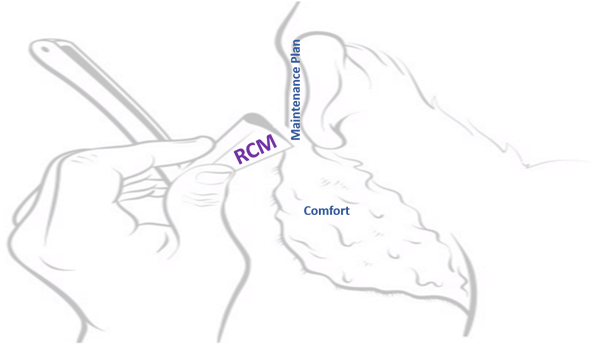
Recently, I grew a beard.
In truth, I go through cycles of it (the duration of those cycles tends to be governed by my wife’s patience) and the term ‘beard’ may be a little optimistic. But I grow enough facial hair to change the appearance of my face enough, and keep it long enough, for me to forget what it actually looks like underneath.
At the end of each cycle, when I’ve chanced my arm long enough, I shave it.
Still nothing prepares me for the feeling, the slight air of unease, associated with seeing my newly naked face. The shock of rediscovering what lies beneath.
The last time that I went through this (did this to myself), it hit me that that same feeling, or the fear of it, is probably the reason why there is reluctance to implement reliability-centered maintenance (RCM).
If an organisation has been operating with a maintenance plan (which has not been reviewed) for some time, then it will be comfortable with it and have confidence, faith and/or trust in it – even if there’s a feeling that it could be improved. If then, you apply a technique like RCM it can feel as though that beard of comfort has been stripped away exposing the flaws in current practice. That’s not a comfortable feeling.
It isn’t really the job of RCM to expose those flaws; it’s the job of RCM to identify the right thing to do going forward but, invariably, there will be comparisons made – between the results of RCM and what’s currently done – that may not make for easy reading and it’s from there that the feeling of unease can stem.
How can that feeling be avoided?
There are a few options here.
- Let the beard grow.
The maintenance plan that is being adhered to must be good enough because that’s what has been done for years. Don’t worry about it or why you’re doing it. Never review your maintenance plan and you’ll never be shocked by the flaws in it.
- Keep the beard trimmed.
Review your maintenance plan at regular intervals. This still has the ability to shock you when you reanalyse but the shocks should be lesser in nature.
- Don’t let the beard grow.
Constantly review your maintenance plan and there will be no shocks. When people talk about RCM being a living programme, this is what they’re talking about. Maintain the analysis that underpins the maintenance plan by feeding information ‘live’.
With my beard, I’ll continue to let it grow for as long as I can before I’m strongly encouraged (forced by ultimatum) to remove it and I’m happy to suffer the slight indignity of rediscovering my face.
When it comes to maintenance though, what choice would you make?
Add Your Heading Text Here

About the Author
Lee is a Director and support engineer with Aspire Consulting. He is the product lead for Aspire’s reliability-centered maintenance and training development services and acts as the focal point for Aspire’s involvement in the Pierian Academy.
Connect with Lee on LinkedIn

About Aspire
What does Aspire do? Almost every organisation on the planet uses equipment to deliver its service. Very few are always
happy with the performance of that equipment. We train, guide and
collaborate with organisations to design support solutions that keep
equipment performing, so they can deliver their service, consistently and
effectively.
Follow Aspire on LinkedIn
